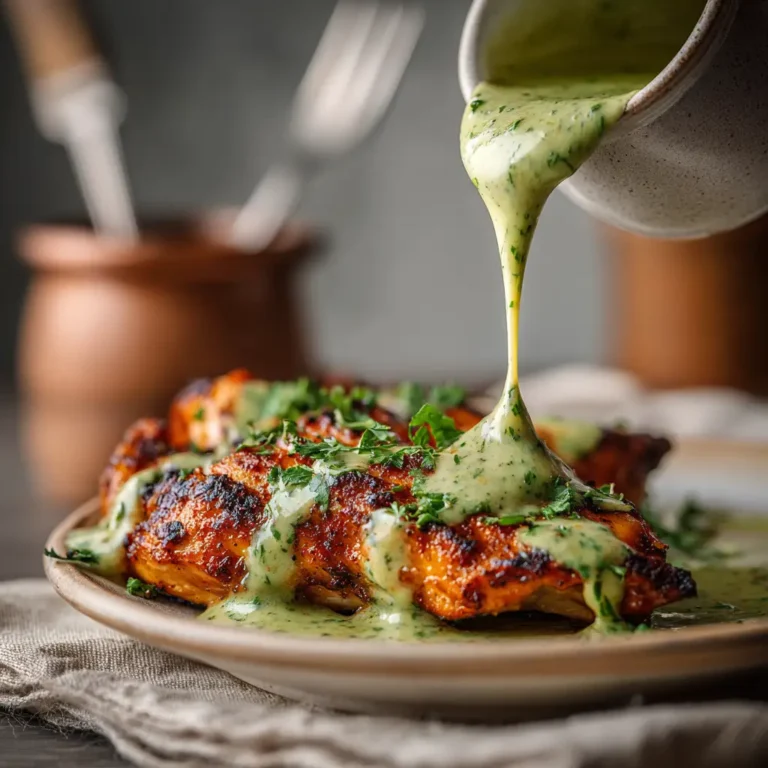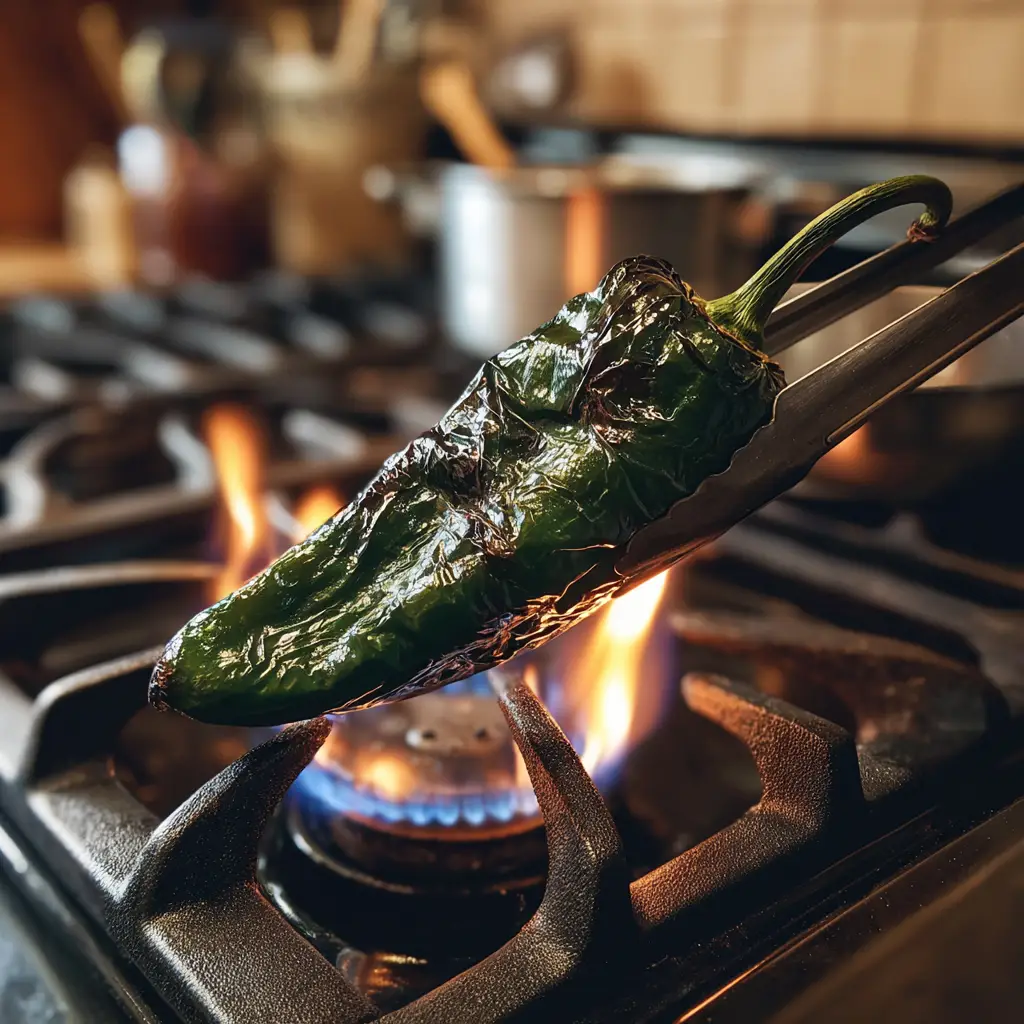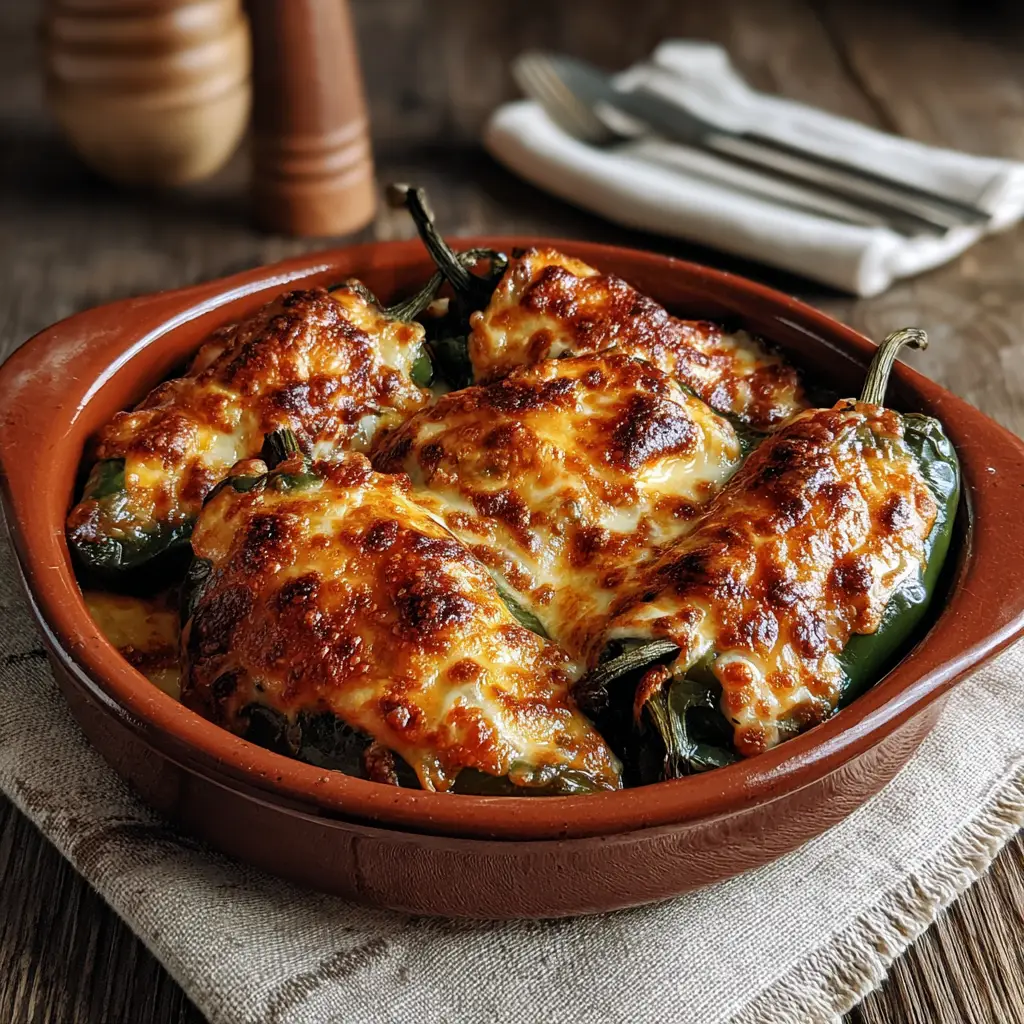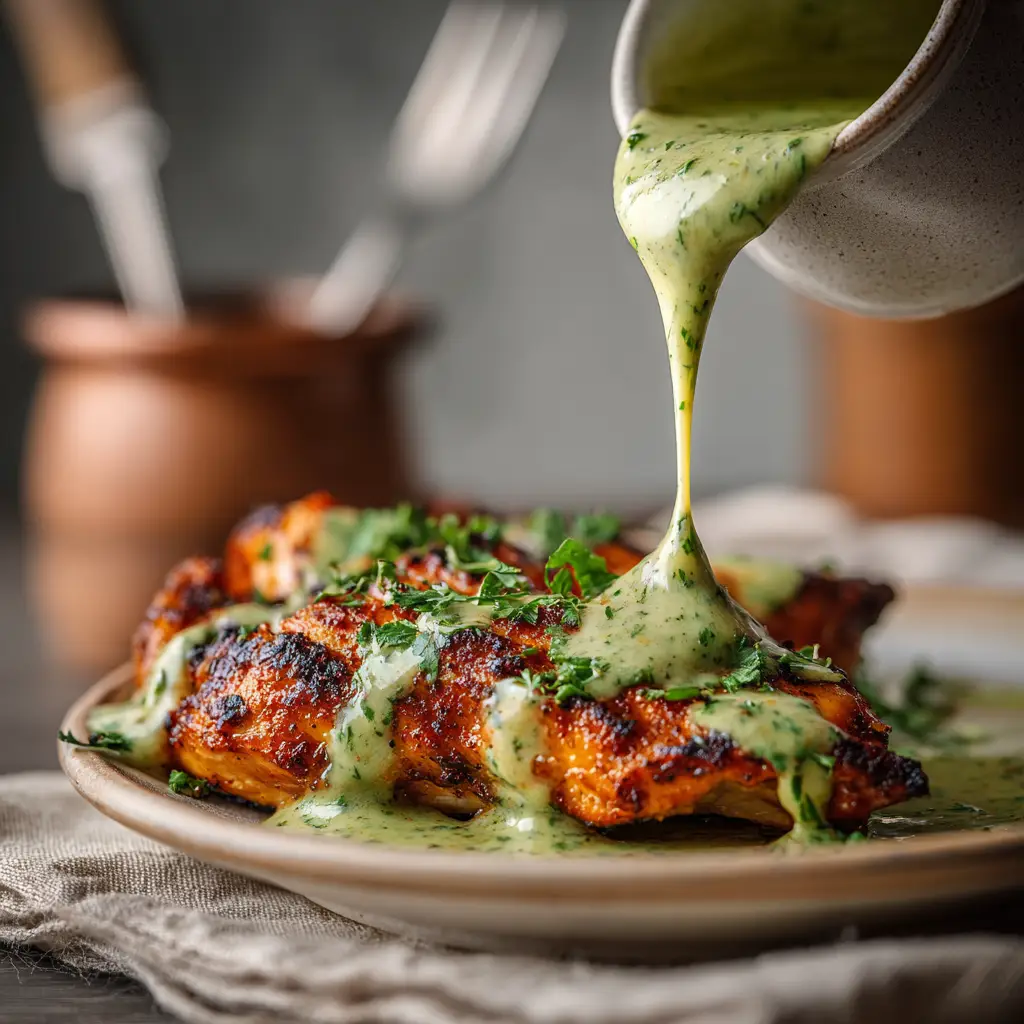Introduction to Roasted Poblano Peppers
Roasted poblano peppers are a flavorful, mildly spicy ingredient that brings a smoky depth to countless recipes. Known for their versatility and rich taste, these dark green peppers become sweeter and more complex when roasted, making them a favorite in Mexican and Southwestern kitchens. Whether you’re stuffing them, blending them into sauces, or adding them to soups, roasted poblano peppers offer both a punch of flavor and a nutritional boost.
These peppers come from the Puebla region of Mexico and have earned a reputation for being less spicy than jalapeños while offering more robust character. When roasted, the pepper’s tough skin blisters and blackens, which not only enhances flavor but also softens the texture—perfect for all kinds of savory dishes.
From stovetop roasting to air fryer methods, learning how to roast poblano peppers can completely elevate your home cooking game. They’re low in calories, packed with vitamin C and antioxidants, and an excellent option for gluten-free, keto, or vegetarian diets. Plus, they store beautifully, so you can roast in batches and keep them handy for later use.
These peppers are more than just an ingredient—they’re a gateway to authentic and bold cuisine. So if you’ve ever wondered how to roast poblano peppers, whether you can eat them raw, or what dishes highlight their flavor best, you’re in the right place.
Learn more about Mexican fusion recipes in our delicious poblanos spaghetti recipe—a unique twist using this incredible pepper.
Table of Contents
What Are Poblano Peppers?
A Brief History of Poblano Peppers
Poblano peppers originate from the Mexican state of Puebla, which is how they got their name. They’ve been used in traditional dishes like chiles en nogada for generations. When dried, they become ancho chiles, another staple in Mexican cuisine. Their mild heat and versatility make them a go-to pepper for everyday cooking.
Why Roasted Poblano Peppers Are So Popular
Roasting poblano peppers transforms their flavor. The heat softens their skin and brings out a smoky-sweet taste that’s hard to beat. It’s not just about flavor—roasting also makes the peppers easier to digest and more suitable for sauces, salsas, and stuffed recipes. The transformation from raw to roasted poblano peppers is one of the simplest ways to upgrade your meals.
Nutritional Benefits of Roasted Poblano Peppers
Roasted poblano peppers are low in carbs and high in antioxidants. They’re a great source of vitamin A, vitamin C, and capsaicin, which may help reduce inflammation. One large roasted poblano contains just 48 calories but delivers over 200% of your daily vitamin C needs. They’re ideal for healthy eating and meal prep.
Print
Roasted Poblano Peppers: How to Roast and Love Every Bite
A rich, smoky, and creamy sauce made with roasted poblano peppers—perfect over enchiladas, tacos, or grilled meats.
- Total Time: 25 minutes
- Yield: 4 servings 1x
Ingredients
- 2 roasted poblano peppers (peeled & seeded)
- 1 cup sour cream
- 1 clove garlic
- 1 tbsp lime juice
- ½ cup chicken broth
- ¼ cup sautéed onion
- Salt and cumin to taste
Instructions
- Step 1: Blend all ingredients until smooth.
- Step 2: Simmer over medium heat for 10 minutes.
- Step 3: Serve warm over enchiladas, tacos, or grilled meats.
Notes
Store refrigerated for up to 5 days.
- Prep Time: 10 minutes
- Cook Time: 15 minutes
- Category: Sauce
- Method: Stovetop
- Cuisine: Mexican Fusion
Nutrition
- Serving Size: 1 serving
- Calories: 120
- Sugar: 2g
- Sodium: 240mg
- Fat: 9g
- Saturated Fat: 5g
- Unsaturated Fat: 3g
- Trans Fat: 0g
- Carbohydrates: 4g
- Fiber: 1g
- Protein: 2g
- Cholesterol: 20mg
Keywords: roasted poblano, cream sauce, spicy sauce, gluten-free
How to Roast Poblano Peppers
Traditional Roasting Methods: Oven, Stovetop & Grill

Roasting poblano peppers brings out their smoky-sweet depth and softens their skin for easy peeling. The most classic method is charring them directly over an open gas flame. Just place each pepper over the burner on medium-high heat and rotate every 30 seconds until all sides blister—usually in 4–5 minutes.
No gas stove? No problem. Preheat your oven to 425°F. Place poblano peppers on a foil-lined baking sheet and roast for 25–30 minutes, turning halfway. You’ll get evenly roasted poblano peppers that are perfect for stuffing or slicing.
Grilling is also fantastic. Toss peppers directly on the grates over medium-high heat. Char for 5–7 minutes, turning often. This method infuses that charred, outdoor flavor that’s unbeatable in summer recipes.
After roasting, place the peppers in a bowl and cover with plastic wrap or a towel for 10 minutes. This steaming step loosens the skins, making them super easy to peel.
How to Roast Poblano Peppers in the Air Fryer
For quick and mess-free results, the air fryer is your best friend. Preheat it to 400°F, lightly oil the poblano peppers, and roast for 10–12 minutes. Turn halfway through. Once they’re blistered and soft, transfer to a sealed container to steam.
Roasted poblano peppers from the air fryer are just as flavorful as traditional methods—plus they’re quicker and cleaner. They work great in meal prep and sauces.
Check out this delicious idea using poblanos in our green spaghetti recipe—a perfect dish for your freshly roasted peppers.
Removing Skins and Seeds After Roasting
Once the peppers have steamed, use your hands or a paper towel to peel off the skins. Avoid rinsing them under water—it can strip away flavor. Cut a slit, remove seeds and stems, and you’re ready to slice, stuff, or blend. Proper roasting and peeling ensure your roasted poblano peppers are full of deep flavor and ready for any recipe.
Flavor Profile and Heat Level of Roasted Poblanos
Is a Roasted Poblano Pepper Spicy?
Let’s settle it—roasted poblano peppers are known for being mild. They typically range between 1,000 to 2,000 Scoville Heat Units (SHU), which is much lower than jalapeños (which hit 8,000 SHU or more). While roasting poblano peppers doesn’t necessarily increase heat, it does concentrate their flavor, giving them a more robust, slightly smoky edge.
So, are roasted poblano peppers spicy? Slightly. Most people describe the heat as a gentle warmth that lingers rather than burns. It’s just enough kick to keep things interesting, but not so much that you’ll be reaching for water. This makes them ideal for crowd-pleasing recipes—no fire-breathing required.
Flavor Differences Between Raw and Roasted Poblanos
Raw poblanos have a grassy, crisp flavor that’s closer to green bell peppers but with a little zing. When you roast poblano peppers, everything changes. The roasting process caramelizes natural sugars in the skin and flesh, unlocking a sweet, smoky, and deeply earthy flavor that raw peppers can’t offer.
That transformation is exactly why roasted poblano peppers are essential in dishes like creamy soups, queso dips, and enchiladas. They layer well with garlic, onions, cream, cheese, and other classic Mexican flavors.
Don’t miss our spicy pairing in this hibachi shrimp recipe for a bold and flavorful meal combo.
Are Poblano Peppers Hot When Cooked?
Whether boiled, sautéed, or roasted, cooking poblano peppers usually tones down their spice. Roasting, in particular, mellows any sharpness and allows the sweet-smoky notes to shine. So while they might smell spicy during the roasting process, the end result is balanced and approachable for even the most sensitive tastebuds.
Roasted poblano peppers offer the perfect balance—flavorful, but never overwhelming.
Comparing Poblano Peppers to Other Chiles
Are Poblano and Jalapeño the Same?
Nope, not even close. While they both fall under the category of Mexican chili peppers, poblano and jalapeño peppers differ in almost every way—especially heat. Jalapeños are much spicier, typically registering between 2,500 to 8,000 SHU, while roasted poblano peppers sit comfortably between 1,000 to 2,000 SHU. That makes poblanos nearly five times milder, ideal for those who want flavor without the fire.
Another key difference is their size and shape. Jalapeños are short and stubby, while poblano peppers are larger and heart-shaped. Poblanos also roast better due to their thicker walls, which makes them a top choice for stuffing and baking.
Flavor-wise, jalapeños are grassy and sharp, especially raw. In contrast, roasted poblano peppers have a deep, smoky-sweet richness that lends itself to gourmet-style dishes.
Anaheim, Jalapeño, and Poblano: Key Differences
Let’s compare three common peppers side by side:
| Pepper | Heat Level (SHU) | Flavor Profile | Best Use |
|---|---|---|---|
| Poblano | 1,000–2,000 | Smoky, mild, earthy | Roasting, stuffing |
| Jalapeño | 2,500–8,000 | Sharp, grassy, spicy | Salsa, pickling |
| Anaheim | 500–2,500 | Mild, slightly sweet | Grilling, roasting |
While Anaheim chiles are similar in heat to poblanos, they’re slightly thinner and less earthy. Poblanos still win in richness and depth—especially when roasted.
Discover great ideas like this shrimp tempura roll to experiment with flavor combinations.
What Is Another Name for a Poblano Pepper?
When dried, poblano peppers become ancho chiles, a pantry staple for making sauces like mole. However, the fresh form is almost always labeled “poblano.” Some markets may also refer to them as “Mexican green chile,” but “poblano” remains the most recognized name.
Best Ways to Use Roasted Poblano Peppers in Cooking
Stuffed Roasted Poblano Pepper Recipes

One of the most iconic uses for roasted poblano peppers is stuffing them. Their thick walls and mild heat make them the perfect vessel for a wide variety of fillings. You can go traditional with cheese-stuffed poblanos, also known as chiles rellenos, or get creative with ground beef, rice, or quinoa.
For vegetarians, black beans, corn, and sautéed mushrooms make a satisfying combo. Add shredded cheese and bake them in the oven until bubbly and golden. The roasted poblano peppers act as a smoky, flavorful shell that turns every bite into a delight.
Want extra heat? Toss in chopped jalapeños. Prefer it creamy? A spoonful of crema or sour cream drizzled over the top balances out the smoky pepper beautifully.
Soups, Sauces & Casseroles Featuring Roasted Poblanos
Roasted poblano peppers aren’t just for stuffing—they’re phenomenal in liquid-based dishes, too. Try blending them into creamy poblano soup with chicken broth, garlic, and a touch of heavy cream. The roasted flavor deepens the richness of the soup while keeping the heat manageable.
They’re also great in cheesy casseroles. Mix chopped roasted poblano peppers with shredded chicken, tortillas, and enchilada sauce for a Tex-Mex bake that’s hard to resist.
And don’t overlook sauces. Puree your roasted poblanos with roasted garlic, cilantro, and lime for a smoky green sauce perfect for tacos, burritos, or even grilled steak.
Check out our coffee budino recipe if you’re looking to end your spicy dinner with a sweet and creamy dessert.
Mexican Dishes That Shine with Roasted Poblano Flavor
Classic Mexican recipes like rajas con crema, tamales, and even poblano mac and cheese all benefit from the complexity that roasted poblano peppers add. Their versatility allows them to shine in creamy, spicy, and cheesy preparations—each bite bursting with flavor.
Can You Eat Poblano Peppers Raw or Without Roasting?
Eating Raw Poblano Peppers: Is It Safe and Tasty?
Yes, you can absolutely eat poblano peppers raw. They’re firm, crisp, and mildly spicy—similar to green bell peppers but with a subtle heat. However, raw poblanos can be slightly bitter and grassy in taste, which is why many prefer roasting them. While it’s safe to consume them raw in salads, salsas, or slaws, the true magic of roasted poblano peppers is in how their flavor evolves after roasting.
Raw poblano strips add crunch to tacos or a fresh bite to guacamole. Still, most people find them much more flavorful when cooked. The slightly rubbery texture of the skin can also be off-putting when raw, especially in large pieces.
When to Use Roasted vs. Raw Poblano Peppers in Recipes
Use raw poblanos when you want crunch, color, and a gentle kick—think fresh salsa or chopped toppings. Use roasted poblano peppers when you want smoky, rich, and softened pepper goodness for cooked dishes like enchiladas, soups, sauces, or casseroles.
Roasting also makes poblanos easier to digest for some people, as it breaks down fibers and removes the thick outer skin. The difference in taste and texture is dramatic: raw = crisp and sharp; roasted = soft, smoky, and deep.
Don’t miss our creamy espresso budino dessert as a smooth finish to your poblano-packed meal.
Can You Eat Poblano Peppers Without Roasting?
Definitely. While roasting poblano peppers is the most popular method to enhance flavor, they’re still edible and enjoyable in their raw state. Some dishes even call for lightly sautéed or boiled poblanos, depending on the texture you’re aiming for. Roasting is about taste enhancement—not necessity.
So, if you’re short on time or craving a crunch, skip the roast. But if you want to unlock that full-bodied smoky flavor, roasting remains the best choice.
Homemade Recipes Using Roasted Poblano Peppers
How to Make Roasted Poblano Cream Sauce

If you’ve never tried a roasted poblano cream sauce, you’re missing out on one of the richest, most velvety creations in Tex-Mex cuisine. It’s a perfect example of how roasted poblano peppers transform into a luxurious ingredient with just a few additions.
To make it, blend roasted poblano peppers with sour cream, garlic, sautéed onions, lime juice, and a splash of chicken broth. Add a pinch of salt and cumin for balance. Simmer the mixture until it thickens slightly—about 10 minutes—and serve warm over enchiladas, grilled chicken, or veggies.
This creamy poblano sauce is tangy, smoky, and just spicy enough to make your tastebuds dance.
Fire-Roasted Poblano Pepper Salsa
This one’s for spice lovers who crave boldness. Roasted poblano peppers form the base of an earthy, smoky salsa perfect for tacos, tortilla chips, or breakfast eggs.
Char your poblano peppers well, then blend them with roasted tomatoes, garlic, lime juice, cilantro, and a hint of jalapeño if you want extra heat. The end result? A chunky salsa with real body and flavor—not your typical grocery-store jar.
This recipe is also a great way to use up leftovers from your roasted poblano batch, especially if you roast in bulk.
Looking for inspiration? Try our sweet-and-spicy pairing with banana cinnamon bread as dessert after your bold salsa appetizer.
Roasted Poblano Queso Dip
Forget the yellow stuff. Real queso shines with roasted poblano peppers blended into a creamy cheese base. Melt together shredded Monterey Jack and cheddar with milk or cream, then stir in chopped roasted poblanos, onions, and tomatoes.
This dip is crowd-pleasing, dip-worthy, and unforgettable. Serve it bubbling hot with tortilla chips, drizzled on nachos, or poured over burrito bowls. The roasted poblano peppers bring that smooth, signature kick without overwhelming the flavor.
Preserving and Storing Roasted Poblano Peppers
Best Way to Freeze Roasted Poblano Peppers
After you’ve roasted a big batch of poblano peppers, you might wonder how to keep that smoky goodness fresh. Freezing is the easiest and most effective method. First, roast and peel your roasted poblano peppers, then let them cool completely. Slice or leave them whole—depending on your planned recipes—and store in freezer-safe bags or containers.
For best results, flash-freeze the peppers on a baking sheet for 30 minutes before transferring to containers. This prevents them from sticking together and makes portioning easier later.
Roasted poblano peppers can stay frozen for up to 6 months without losing their flavor. Label your containers with the date so you know when to use them.
Storing in Oil or Vinegar for Extended Use
Looking for an old-school preservation method? Try marinating roasted poblano peppers in olive oil or vinegar. After roasting and peeling, place sliced peppers in a sterilized jar with olive oil, garlic cloves, and herbs like oregano or thyme.
This method infuses flavor and works great as a topping for sandwiches, burgers, or salads. Store the jar in the fridge and use within 2 weeks. For longer shelf life, opt for vinegar-based pickling and store in sterilized canning jars.
Don’t miss our sweet pairing with cinnamon donut bread—the perfect counterbalance to tangy, preserved poblano flavors.
Shelf Life and Safety Tips for Storage
In the fridge, roasted poblano peppers last about 4–5 days when sealed in an airtight container. Always allow them to cool completely before storing to avoid excess moisture and bacterial growth.
If stored in oil, always keep the jar refrigerated to avoid botulism risks. Never leave oil-packed peppers at room temperature for extended periods. Frozen roasted poblano peppers are safe for months, but once thawed, use them within 3–4 days for best flavor and texture.
Want more background on poblano peppers? Check out this detailed Wikipedia article on Poblano Peppers to explore their origins, uses, and varieties.
Preserve smart, and your roasted poblano peppers will be ready to spice up your recipes all year long.
Frequently Asked Questions (FAQs)
How do you roast poblano peppers?
To roast poblano peppers, place them over an open gas flame, under the broiler, or in an oven at 425°F. Turn them every few minutes until the skins are blistered and blackened. Then place them in a covered bowl or bag to steam for 10 minutes. Peel off the skin, remove the seeds, and enjoy your freshly roasted poblano peppers.
What is another name for a poblano pepper?
When dried, poblano peppers are called ancho chiles. This is the most common alternate name, especially in traditional Mexican cooking. However, fresh poblanos are rarely sold under any other name in grocery stores.
Are poblano and jalapeño the same?
Not at all. Jalapeños are much smaller and significantly hotter than poblano peppers. Roasted poblano peppers are milder and have a smoky, earthy flavor, while jalapeños deliver a sharper heat and more grassy taste.
Is roasted poblano pepper spicy?
Roasted poblano peppers are generally mild. They register between 1,000 and 2,000 Scoville Heat Units (SHU), offering a gentle heat that’s more about flavor than fire. Roasting doesn’t increase the heat—it mellows it while deepening the flavor.
Can you eat poblano peppers raw?
Yes, poblano peppers can be eaten raw, though they have a firmer texture and slightly bitter edge. Most people prefer roasted poblano peppers because roasting enhances their sweetness and makes them softer and more flavorful.
Can I roast poblano peppers in an air fryer?
Absolutely. Air fryers are a great way to roast poblano peppers quickly. Preheat to 400°F, cook for 10–12 minutes, and turn halfway through. The skin will blister just like it does with oven roasting.
Can you eat poblano peppers without roasting?
Yes, you can. While roasting boosts flavor, it’s not required. Raw poblanos can be chopped into salads, used in salsas, or stuffed for a crisp texture. But if you’re looking for that smoky richness, roasted is the way to go.
How to make roast peppers?
To make roasted peppers of any kind, place them under a hot broiler, on a grill, or in a 425°F oven until the skin blackens and blisters. Then steam them for easy peeling. This technique works beautifully for bell peppers, jalapeños, and of course, roasted poblano peppers.
Are poblano peppers hot when cooked?
No. Cooking, especially roasting, reduces their sharpness and brings out natural sweetness. So while there’s a mild kick, roasted poblano peppers are far from hot compared to chili varieties like habaneros or serranos.
What is the best way to eat poblano peppers?
The best way to eat them is roasted. Stuff them with cheese, blend them into sauces, slice them into soups, or make poblano queso. Roasting enhances their texture and brings out their true flavor potential.




1 thought on “Roasted Poblano Peppers: How to Roast and Love Every Bite”